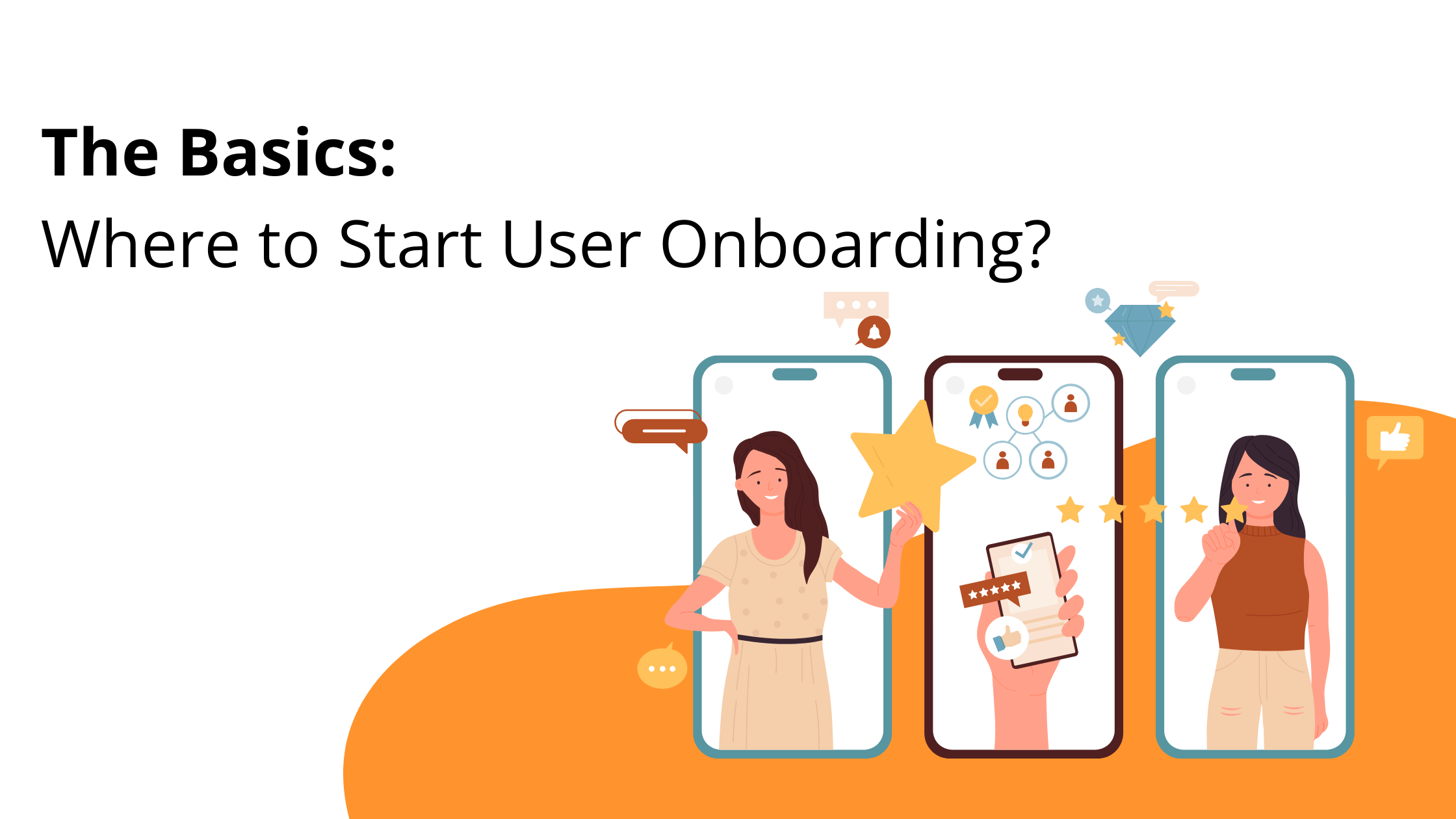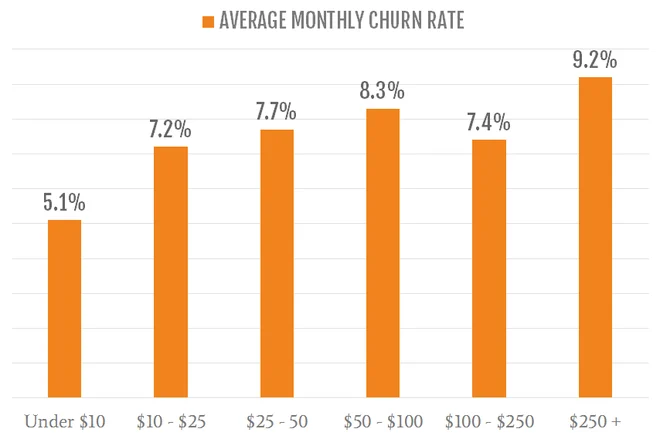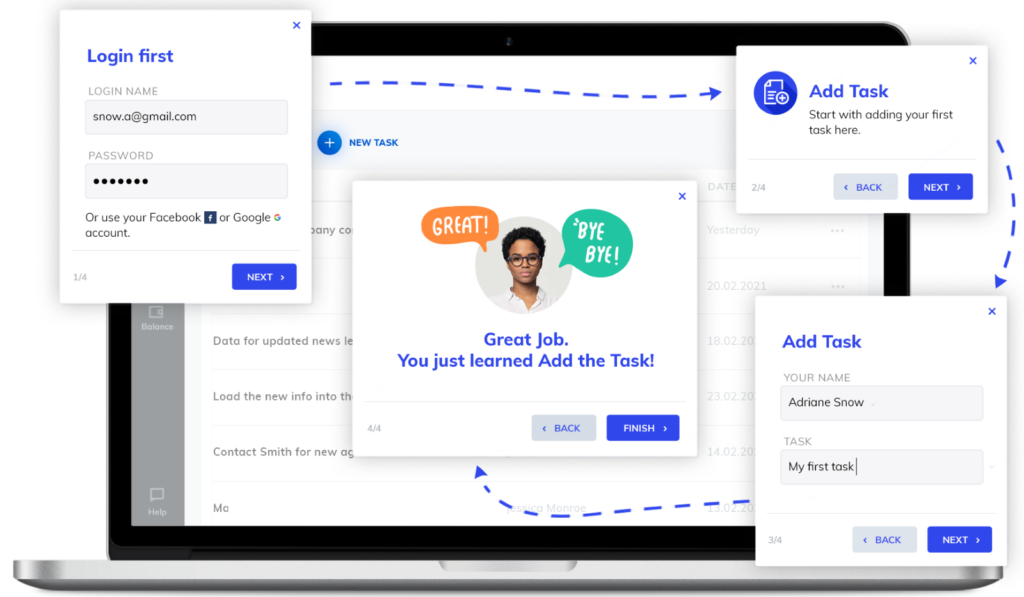
Time is your customer’s most precious resource. Delivering exceptional onboarding, driving product adoption, and ensuring retention throughout the customer journey is vital in the fast-paced world of digital products, particularly online portals, SaaS, and web or intranet applications. But have you considered how quickly you’re demonstrating value to your users? How long does it take? The metric you might be overlooking — Time to Value (TTV) — could be the key to unlocking the full potential of your product’s success.
Time to Value (TTV) is the time it takes for a user to experience the promised value of a SaaS product after signing up or purchasing.
The main types of TTV are:
As a rule of thumb: Faster TTV = Higher retention & lower churn. 💫
Here’s why the time to value matters: Most (almost two-thirds) of users decide whether to use a product during their first interaction. Even among those who “stick,” a significant number churn. Average monthly customer retention rates for SaaS companies range from 5 to 9 % according to meta-analysis done by Cobloom on Baremetrics data (see chart below), with an average of 7,5 %, which is 61 % churn annualized. Other sources may give lower SaaS churn averages, for example, 5.6% (recurring), but even that comes as 46 % annually. It is generally accepted that delays in delivering value contribute to customer churn.

A slow time to value (TTV) isn’t just a missed opportunity—it’s a potential churn trigger. Gartner’s research highlights that with the expansion of hybrid work, automated onboarding processes are more critical than ever. For SaaS businesses, every delayed “aha moment” increases the risk of losing users before realizing your product’s full potential.
The pressure to optimize time to value often isn’t just about metrics—it’s about survival. In competitive markets, where switching costs are lower than ever, and alternatives are just a click away, quickly proving your product or service’s worth can be a significant competitive advantage. This is especially critical as customer retention remains the most cost-effective growth strategy. Increasing retention by just 5% can boost profits by up to 95%, according to Bain & Company (as quoted by Forbes).
Understanding time to value isn’t just about the ability to retain customers; it’s also about exceeding customer expectations. When users experience immediate time to value, they’re more likely to stay engaged, advocate for your product, and convert into long-term customers. In the sections ahead, we’ll explore actionable strategies to minimize time to value and transform your onboarding process, adoption, and retention efforts into a competitive advantage. And more – we will also include some tips on what NOT to do with regard to time to value.
Great news: all the things you need to do to shorten your users’ Time to Value can be easily done in Product Fruits. Try it out now for free, as the first two weeks are on us!
The sooner customers realize the fundamental value of your product or service, the more likely they are to remain engaged and satisfied. This principle is foundational in customer success and user onboarding strategies. It’s particularly emphasized in the SaaS industry, where new customers expect quick returns on their subscription investments. Still, it holds true for any digital product, web app, or portal user.

The activation phase is key to shortening time to value, typically during customer onboarding or adoption. This is the moment when the user begins using your product and looks for the first or desired results and succeeds—the so-called “aha moment.” However, as an image from gopractice.io above suggests, other factors are at play in the overall customer experience. For example, excessive expectations set by marketing are harder to match during activation.
Product managers and customer success managers use time to value to prioritize features that deliver essential value to users. This ensures that development efforts and the activities of the customer success team focus on high-impact areas.
Designing intuitive user onboarding processes that shorten time to value helps retain new users by quickly demonstrating the product’s benefits.
Reducing time to value is crucial for retaining new clients, as the most significant churn risk occurs early on before users invest substantial time in the product.
A shorter time to value differentiates your Web app or SaaS product, making it more appealing to potential customers and users.
Of course, time to value is heavily used in other areas such as consulting services, retail, e-commerce, and more.
Sow, how do you use Time to Value for digital products in real life? We have compiled a few good (and also a few bad) examples.
A project management SaaS platform implements an intuitive onboarding flow. This can be achieved with a welcome tour and/or onboarding checklist that guides new users through setting up their first project within minutes. (See the video below for an example built on Product Fruits by one of our clients.) This immediate engagement allows users to experience the platform’s value promptly, enhancing satisfaction and reducing the likelihood of early churn.
Cloud service allows new users to instantly access a key feature with a pop-up message or feature tour —possibly even without complex setup procedures. By immediately showing users how to perform essential tasks, the service ensures that customers quickly perceive its value, fostering trust and encouraging continued use.
Self-service support tools, such as an integrated help center or knowledge base with advanced search functions, allow users to quickly find answers to their questions without contacting support. This is a double win—your customers or users can get to their “aha moment” sooner and be happier overall, and you reduce the number of support tickets and support (over) load as a bonus.
A marketing automation platform requires new users to complete extensive training modules before accessing core features. This prolonged onboarding delays the user’s ability to experience the product’s value, increasing frustration and the risk of abandonment.
A SaaS CRM system restricts access to key functionalities until users complete specific milestones. While there may be sound reasons for such an approach, delays can prevent users from quickly realizing the product’s value, leading to frustration, dissatisfaction, and potential churn.
A SaaS platform focuses its onboarding on showcasing advanced features that may not be immediately relevant to new users. This approach can overwhelm users, causing them to miss the immediate value of basic functionalities, thereby delaying time to value unnecessarily.
Effectively managing time to value involves simplifying onboarding processes, providing immediate access to essential features, efficiently announcing new features and reintroducing forgotten ones, and offering self-service and personalized support to ensure that customers quickly perceive and experience the value of a SaaS product.
Conversely, complex onboarding, delayed feature access, and overwhelming users with advanced functionalities can hinder value realization, negatively impacting customer satisfaction and retention.
Great news: all the things you need to do to shorten TTV can be easily done in Product Fruits; try it out now for free, as the first two weeks are on us!
We have discussed what improves time to value (TTV) and what can hinder it. Now, it’s time to focus on how you measure TTV—let’s break it down into four simple steps, along with examples of approaches to avoid.
Determine user actions that signify value realization, such as completing account setup, integrating with other tools, using advanced features, or achieving a particular outcome with your product or service. These actions help reduce time to fundamental value for users.
Implement tools that enable users to meet specified goals. Digital or user adoption platforms, such as our Product Fruits, provide valuable tools for onboarding processes (welcome tours, onboarding checklists), adoption (feature tours, notifications), in-app communication (banners, pop-ups, newsfeeds), self-support (LRB and knowledge base), and feedback collection. These features accelerate user onboarding and effectively reduce time to value.

Monitor the time it takes for users to reach critical milestones. Start from sign-up or the launch of a specific feature. Measure time metrics before creating onboarding content to establish a baseline, then iterate to minimize time to value. This ensures a shorter immediate time to value and keeps users engaged with the product’s capabilities.
Some SaaS companies offer built-in analytics or integrate with third-party tools for tracking TTV. Specialized platforms can provide deeper insights into user behavior and help track key metrics. Analytics tools also support segmentation, which allows you to target different customer segments and refine your onboarding process for specific needs.
Profile users by industry, company size, or use case to understand variations in TTV. This enables you to develop targeted onboarding strategies for different customer groups and enhance customer satisfaction.
Engage users to gather qualitative data on their experiences and perceptions of value realization. This feedback helps identify obstacles delaying TTV and guides improvements in your customer success team’s efforts.
Focusing only on numerical metrics without considering user sentiment can provide an incomplete picture. Incorporate qualitative insights to fully understand user experiences.
Applying a one-size-fits-all measurement approach overlooks different user groups’ diverse needs and behaviors. Segment users to gain more accurate and actionable insights.
Neglecting to analyze the onboarding journey can miss critical factors affecting TTV. Ensure the onboarding process is optimized to facilitate quick value realization.
As your product evolves, so should your TTV measurement criteria. Regularly reassess and adjust your metrics to align with new features and user expectations.
By implementing these effective measurement strategies and avoiding common pitfalls, you can gain a comprehensive understanding of your SaaS product’s time to value, leading to improved user satisfaction and retention. Of course, the product manager or customer success manager also employs several other metrics, such as customer lifetime value, on this customer journey.
Start improving your customers’ Time to Value with Product Fruits now. We are a complete user onboarding and digital adoption platform. Try it out for free; the first two weeks are on us!